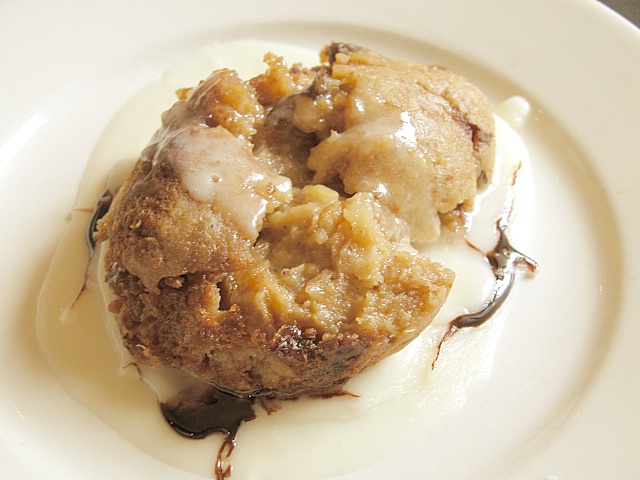 My abuelita Nieves was a fabulous cook! She could take any combination of ingredients and make them taste great. Even something as simple as fried eggs and rice (one of my favorite quick meals).
My abuelita Nieves was a fabulous cook! She could take any combination of ingredients and make them taste great. Even something as simple as fried eggs and rice (one of my favorite quick meals).
One of her best dishes was an amazing bread pudding. I always loved it and try to make it whenever I can. The basic dish is simple to make and once you get the hang of it, you can try a number of variations, such as substituting brioche for the regular bread or cinnamon-raisin bread for a super cinnamony/raisiny version.
So here’s my Grandma Nieves’s recipe for Bread Pudding! I hope you enjoy it!
Basic Ingredients:
For the baking process: Large loaf baking pan or round quart and a half dish. Corningware is great since you can make the caramel in it and then add the pudding ingredients thereby using only one pan! You’ll also need a large baking dish to use for the bain marie and enough hot water to fill large baking pan halfway up the sides.
For the caramel: 1 cup plain white sugar
For the bread pudding:
3 whole eggs
3 cups whole milk
1 can Condensed Milk (Not evaporated, but Sweetened Condensed Milk. Magnolia or Eagle Brand are favorites!)
2 teaspoons vanilla extract
1/4 to 1/2 teaspoon cinnamon
Raisins (about a 1/4 cup soaked in water or an alcohol like rum for a kick)
A loaf of stale Italian bread (no seeds)
Step 1: Preheat oven to 350 degrees. Place a large baking pan in the oven with hot, but not boiling water about half way up the side of the pan. This will make what is called a Bain Marie. The Bain Marie will help keep the bread pudding from drying out and will allow it to cook evenly.
 Step 2:Make a caramel much like you did for the Cuban Flan.
Step 2:Make a caramel much like you did for the Cuban Flan.
Start with 1/2 cup of sugar and dissolve it in 1/2 cup to 1 cup water. Make sure the sugar is fully dissolved before you begin to heat it (if you have any sugar left, it will form crystals and be gritty). Once the sugar is dissolved, set the pan with the sugar over medium heat in a heavy medium/small saucepan or preferably, an ovenproof dish. Use a wooden spoon to stir until the sugar water is reduced (it should get thicker as it cooks). Grandma liked it light, but you can let it get golden and keep on going until it is a dark brown. (Again, be very careful!! Cooked sugar is very hot and can burn the skin if it spatters.)
Step 3: Beat eggs lightly in large bowl. Mix in condensed milk, regular milk, vanilla and cinnamon. Break Italian bread into chunks and place in bowl to soak. Let soak for at least half and hour and then mix with hands to make sure there are no dry spots in the bread pieces. It’s okay if the bread pieces get really really small or even disappear. This bread pudding version doesn’t have large chunks of bread. Once it’s mixed, add the raisins and give one final mix.
Step 4: Place bread pudding mixture into the caramelized pan. Place the pan in the hot boiling water (bain marie) and bake at 350 degrees for about 35 to 45 minutes or until the pudding is set and a knife placed in the center comes out clean.
Cool the bread pudding on the counter for about half an hour before placing into the fridge to chill.
I always loved eating the bread pudding with a drizzle of condensed milk over the top (have you guessed that Cubans love condensed milk yet?)
Hope you try this out!

 One of the dishes that we serve on Christmas Eve is yuca with mojo.
One of the dishes that we serve on Christmas Eve is yuca with mojo.  This is recipe for my family’s Cuban Black Beans which you can eat as a soup or really thicken to put over your rice. Also, it’s the same basic recipe if you want to make red beans or lentils, although I usually add a ham bone or some other ham/pork product to those for additional substance.
This is recipe for my family’s Cuban Black Beans which you can eat as a soup or really thicken to put over your rice. Also, it’s the same basic recipe if you want to make red beans or lentils, although I usually add a ham bone or some other ham/pork product to those for additional substance.